Sandspurs may threaten baby shorebirds: Roller-wielding volunteers to the rescue
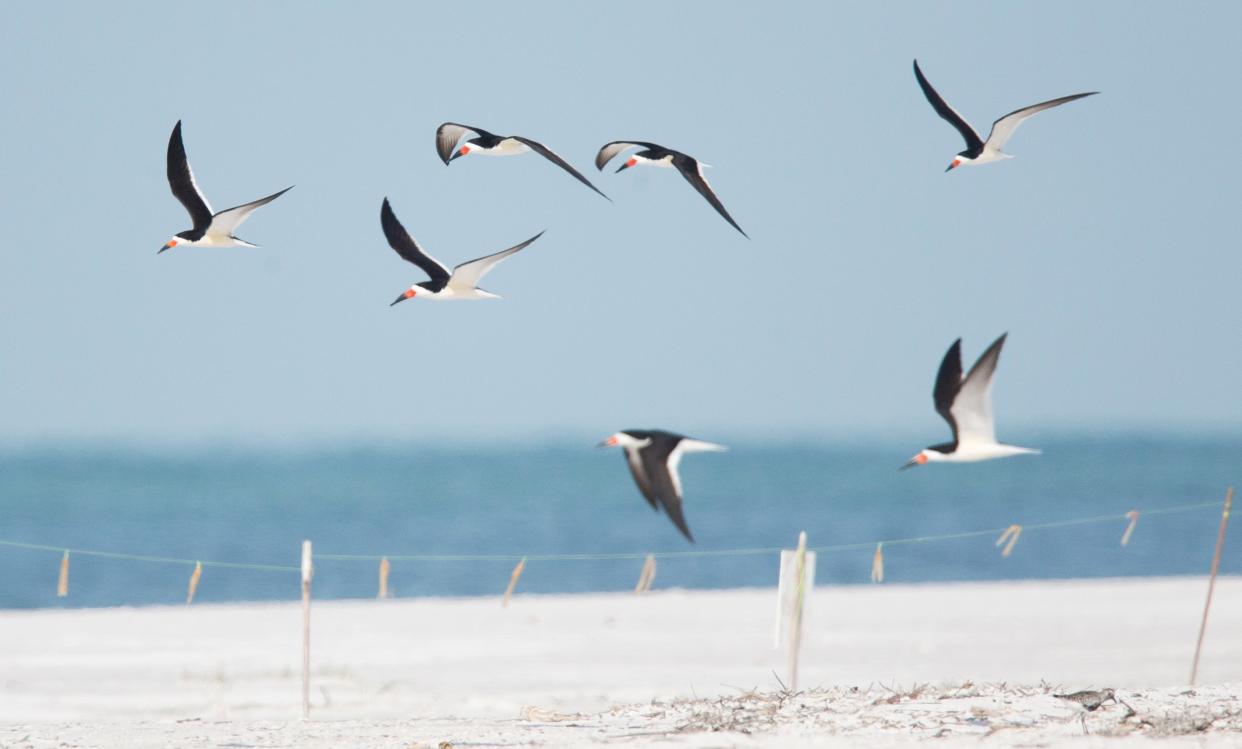
For beachgoers, sandspurs are a familiar hassle. Their wickedly spiky seeds latch onto towels and bare feet with a prickly death grip, defying even the most nimble-fingered attempts to remove them.
So imagine what it’s like to be a black skimmer chick toddling through a head-high forest of the stuff as the seeds’ teeny barbs implant in your bare legs and the only tool you have to remove them is an awkwardly long bill with an underbite.
To make matters more urgent, researchers are looking into the possibility that sandspur wounds may be linked to a mysterious malady sickening and killing the threatened shorebirds.
But thanks to a serendipitous social media encounter with a Utah inventor’s soon-to-be-patented device, life is getting a bit easier for the birds who nest and rest at the south end of Fort Myers Beach.
More: CROW veterinarians find septic arthritis in threatened black skimmer shorebirds
More: Watch out for projectile bird poo: Southwest Florida shorebird nesting season has started
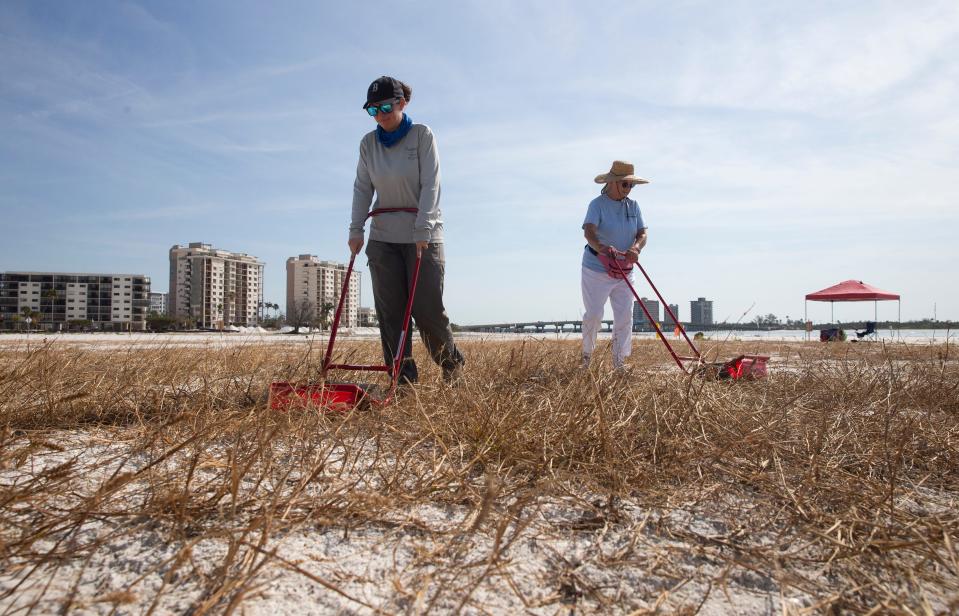
Last week, Audubon Florida’s Southwest Florida shorebird manager Rochelle Streker and volunteer Karen Doyle spent a morning combing the beach with the red, push-mower-looking Sticker Burr Rollers. The machines collect only the nasty seed heads, leaving behind the plant and its dune-building root system, Streker says.
Here are four things to know about the effort:
The project is for the birds
Bad news for those hoping to find sandspur-free swaths of sand: The areas getting rolled aren't where beachgoers should be. Several species of shorebirds use the beach in and near what's known as the Little Estero Island Critical Wildlife Area, and much of it is roped off to keep intruders away from them.
It and other such sites are established by Florida's Fish and Wildlife Conservation Commission as "an important conservation tool for imperiled species," according to the agency. Established in 1992, Little Estero's 50 acres protect vulnerable birds including threatened black skimmers, snowy and piping plovers, American oystercatchers, red knots and least terns, who rest and nest in shallow cups they scrape into the sand.
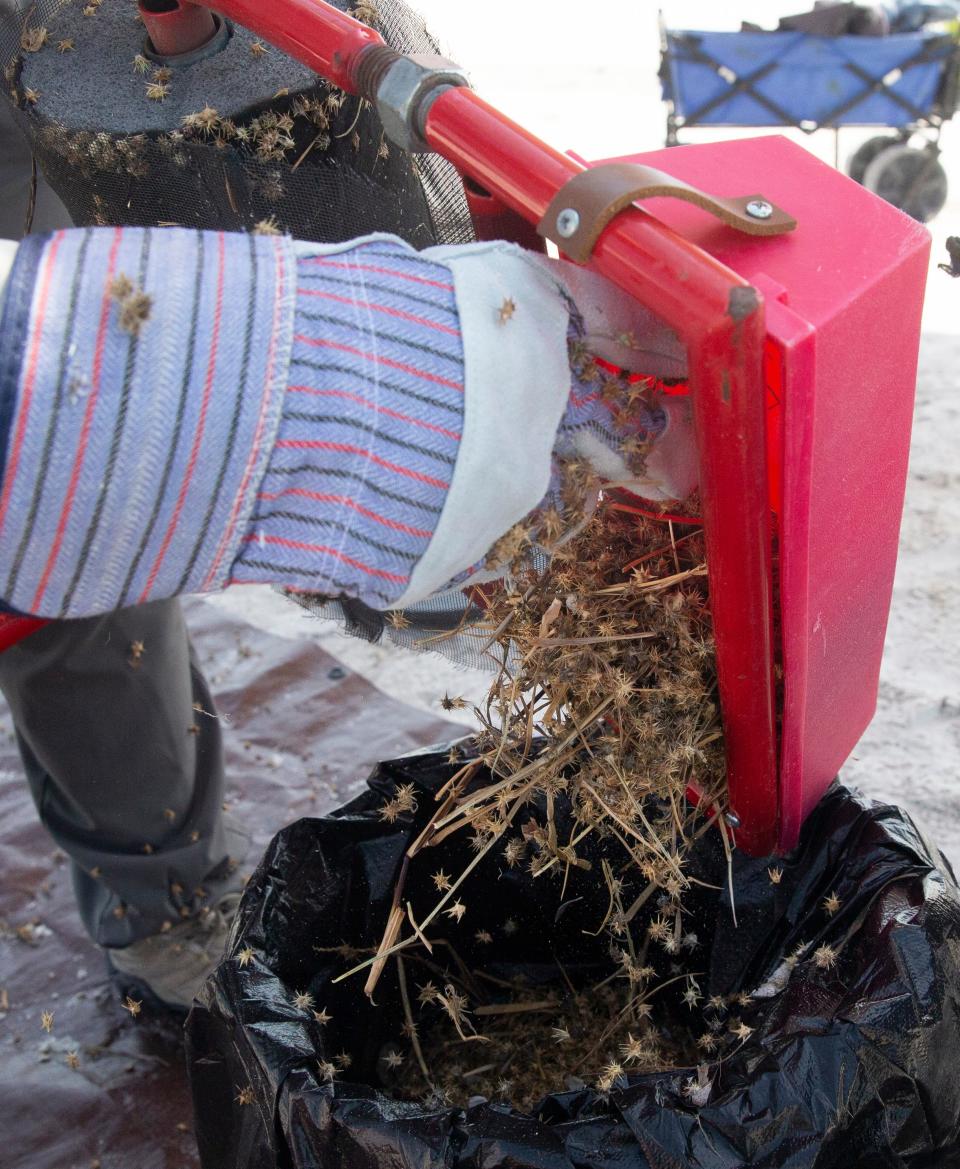
Black skimmers were already in trouble
For some reason, the skimmers are the ones dying from septic arthritis. With a feeding technique unique on the planet, these slender birds glide low over the water, their longer lower mandible slicing the surface. Once they touch a fish, they snap their bills shut, snatching the prey from the water. There are about 6,800 breeding pairs left in Florida, with the greatest concentrations in the Tampa/St. Pete area and Marco Island according to the Florida Shorebird Alliance, and the state of Florida classifies them as threatened.
The species was in the news earlier this year when a worker at the JW Marriott Marco Island Beach Resort revved his golf cart through a flock of black skimmers, killing five of them.
More: Why did Marco Marriot worker allegedly mow down shorebirds? 'That's the million-dollar question'
How infected sandspur wounds may kill chicks
A few years ago, young skimmers started turning up sick and dying. The little birds had swollen legs and feet; most could barely walk. Even with skilled veterinary care, many had to be euthanized. In 2020, the state wildlife agency sent specimens to the Southeastern Cooperative Wildlife Disease Study at the University of Georgia, where veterinarians diagnosed the birds with bacterial infections in their skin, tendons and bones.
Since then, a team including Audubon, the Florida Fish and Wildlife Conservation Commission, Rookery Bay National Estuarine Research Reserve has been researching the cause with funding help from the Fish and Wildlife Foundation of Florida. They're looking at whether myriad sandspur punctures could become infected with bacteria in the environment (why the bacteria are there in the first place is another question; Audubon biologist Adam DiNuovo theorized about the source, "It could be a leaky pipe somewhere that nobody knows about," and urged expanded water testing.)
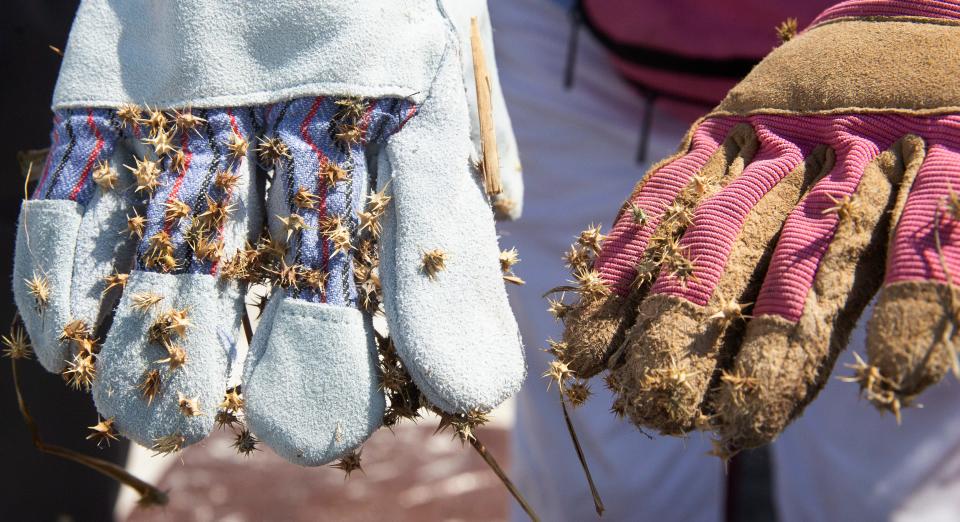
One thing the sick birds had in common: sandspurs. A 2021 survey by the Sanibel-Captiva Conservation Foundation's Shorebird Team found black skimmer nestlings covered in sandspurs. Since then, Audubon has been working on ways to rid nesting areas of the seeds. It tried several things with little success, including pulling them by hand. Then came the Sticker Burr Roller.
The device was intended to solve a western problem
That his creation would wind up helping baby birds in Florida was a complete surprise to Utah inventor Stacy Stubbs. "I actually designed the machine to pick up a different species. We have these plants that will actually puncture your tires," he said.
Known as goat heads or puncture vines, they're a scourge where he lives, so he set about developing a walk-behind machine with a foam cylinder, a mesh screen and a basket to catch the rolled up seed heads.
When Audubon staff saw the device on social media, they reached out, Streker said. Stubbs wound up donating several of the machines and flying out for a test run. "When they told me the effect (sandspurs) were having on the birds, it impacted me so much." He says the U.S. Patent Office is set to approve his application for the Sticker Burr Roller soon, and he's working on a version a tractor can pull for large-scale removal. Learn more here: https://www.facebook.com/removestickerburrs/
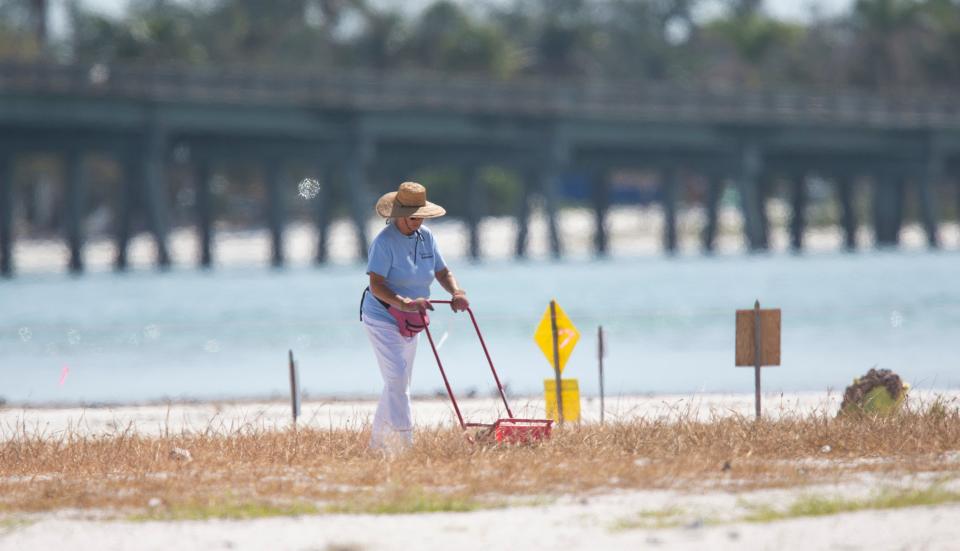
Yes, the sandspur is a native plant but …
Sandspurs, also called sandburs or stickerburrs) are a native Florida grass in the Cenchrus genus that thrives all over the state. As Sanibel-Captiva Conservation Foundation's Adult Education Director Jenny Evans says, "They're really prolific, so from an ecological standpoint, the species isn't in danger."
Plus, Audubon is only removing the seeds ‒ not yanking up the whole plant, so the blades and stems "are still benefitting other wildlife in terms of protection ‒ providing cover ‒ and helping with erosion," Evans said.
Paradoxically, the beach raking property owners do may make things worse. Streker says ongoing research at Rookery Bay appears to show that disturbing the plants with machines ‒ whether by dredging or with tractor-dragged rigs ‒ helps the seeds sprout. Several nearby condo associations rake the beach each year once nesting season ends, and "In this area, we have a much higher concentration (of sandspurs)," Streker says, "because when you scar up the seeds, germination rates explode ... so we think that's part of the problem."
If you want to help
You can volunteer to become a bird steward. Learn more here: https://fl.audubon.org/news/become-bird-steward
This article originally appeared on Fort Myers News-Press: Sandspurs may threaten baby shorebirds; new invention aims to help

